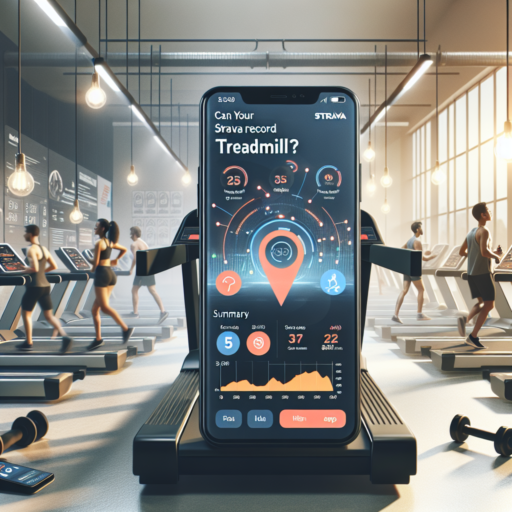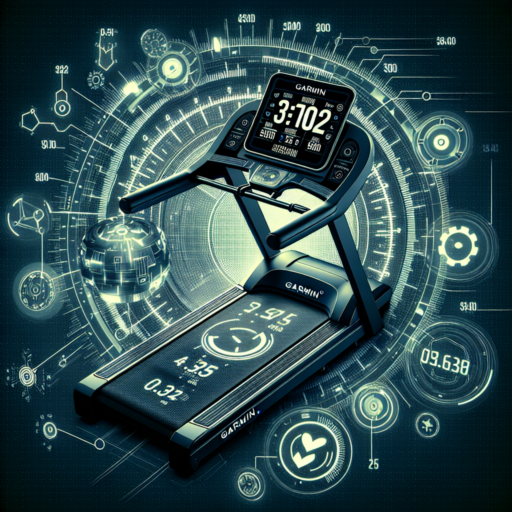How to Use Strava to Record Treadmill Runs
Using Strava to track your treadmill runs is a fantastic way to keep your indoor training sessions documented and analyze your performance over time. While Strava is widely recognized for its GPS tracking capabilities in outdoor activities, many users might not know that it also offers features for recording treadmill runs. This guide will help you make the most out of your indoor running sessions by integrating them into your Strava account.
Firstly, to record a treadmill run on Strava, you need to manually log the activity. After completing your run, open the Strava app and select the ‘+’ icon. Choose ‘Manual Activity’ and then pick ‘Run’ as your sport type. Here, you can input the duration, distance, and other details of your treadmill run. Although this method doesn’t track your run in real-time, it enables you to keep accurate records of your indoor workouts alongside your outdoor activities.
For those looking for a more automated approach, connecting a compatible fitness tracker or smartwatch that syncs with Strava is your go-to solution. Brands like Garmin, Apple Watch, and Fitbit offer wearables that can record your treadmill runs directly. Once your device is connected to Strava, it will automatically upload your indoor running sessions as soon as they are completed, making it easier to track your progress without any extra steps.
Lastly, it’s important to accurately calibrate your fitness device to ensure that the data it records matches your treadmill’s information as closely as possible. Discrepancies in distance or pace can occur, but by regularly updating your device’s settings and calibrating it according to your treadmill’s specifics, you can minimize these differences and maintain a reliable training log on Strava. This not only helps in tracking your performance accurately but also in setting realistic fitness goals based on reliable data.
Setting Up Strava for Indoor Running: A Step-by-Step Guide
Initiating your indoor running journey with Strava can transform your fitness routine, providing detailed insights and social features to keep you motivated. Whether you’re looking to track your treadmill workouts or engage with a community of runners, setting up Strava for indoor use is straightforward. In this guide, we’ll walk you through the essential steps to get started.
Step 1: Download and Install the Strava App
The first step in harnessing the power of Strava for your indoor running sessions is to download and install the app. Strava is available on both iOS and Android platforms, making it accessible for a wide range of users. Once the app is installed, create an account or log in, and you’re ready to move on to the next step.
Step 2: Connect Your Fitness Tracker or Smartwatch
Most of the magic happens when you connect your fitness tracker or smartwatch to Strava. This allows for seamless data transfer, including your pace, distance, and heart rate. Navigate to the ‘Settings’ menu in the Strava app, select ‘Link Other Services’, and choose your device manufacturer from the list to pair your device. This step ensures that every indoor run is accurately tracked and recorded.
Step 3: Set Up for Indoor Running
With your device connected, it’s time to specify that your runs will be indoor. This is crucial for accurate data collection. In your device’s settings, look for the option to track exercises and select ‘Indoor Running’ or a similar setting. This tells Strava and your device to adjust for indoor conditions, such as the lack of GPS data, ensuring that your workouts are recorded with the right parameters in mind.
5 Tips to Accurately Record Treadmill Workouts on Strava
Utilize the Manual Entry Feature for Greater Accuracy
Strava’s manual entry feature is a key tool for recording treadmill workouts accurately. By inputting the specifics of your run, including distance, time, and pace, directly into the platform, you ensure that every detail mirrors your treadmill session. This method bypasses potential discrepancies that can occur with automatic tracking, making it an indispensable tip for accurate recording.
Sync Your Fitness Tracker with Strava
For those who prefer the convenience of wearable technology, syncing your fitness tracker with Strava can streamline the process of recording treadmill workouts. Many modern fitness trackers are equipped to precisely measure indoor exercises, including treadmill runs. Once synced, your device automatically uploads workout data to Strava, ensuring your statistics reflect your effort with minimal manual adjustment.
Adjust Settings for Indoor Tracking
Adjusting your device’s settings to specifically cater to indoor activities can significantly enhance the accuracy of recorded treadmill workouts on Strava. Select the «Treadmill» or «Indoor Running» mode on both your fitness tracker and within the Strava app. This instructs your device to rely more heavily on sensors such as accelerometers to track movement, rather than GPS signals, which are less effective indoors. The result is a more precise capture of your workout’s intensity and duration.
Strava and Treadmill Runs: Pairing with Indoor Running Devices
When it comes to maintaining a consistent fitness routine, many runners turn to treadmills for their indoor workout sessions. The challenge often lies in accurately tracking these indoor runs. This has led to a growing interest in how Strava, a popular fitness tracking app, pairs with various indoor running devices. By ensuring seamless integration, runners can continue to track mileage, pace, and other vital running metrics without missing a beat.
Pairing Strava with treadmill runs offers a comprehensive solution for runners seeking to translate their indoor efforts into actionable data. Through direct connectivity with compatible running devices or through manual entry, Strava allows for a detailed recording of each treadmill session. This capability not only keeps runners motivated by seeing their progress but also enables a consistent tracking experience that aligns with outdoor runs. The use of Strava with indoor running devices has transformed the treadmill experience from a solitary activity to one that is connected to a global running community.
Moreover, the application supports a variety of indoor running devices, including smart treadmills and foot pods, which vary in complexity and price point. This diversity ensures that there is a tracking solution available for every type of runner, from the casual jogger to the serious marathoner. Whether it is a basic model that syncs workout data via Bluetooth or a more advanced treadmill that offers direct integration, Strava’s compatibility range makes it an invaluable tool for indoor runners. Through effective pairing, runners can keep an accurate log of their training, analyze performance over time, and set realistic fitness goals based on the data captured during their treadmill runs.
Maximizing Strava for Treadmill Running: Tracking and Analysis
Strava, a leading app for outdoor runners and cyclists, has capabilities beyond the open road; it’s also a powerful tool for treadmill runners looking to enhance their training through meticulous tracking and analysis. Despite its reputation for outdoor activities, Strava can be effectively harnessed to monitor indoor treadmill workouts, giving athletes a comprehensive view of their performance over time. This transformation involves understanding how to utilize Strava’s features to their fullest, ensuring treadmill runs are not just an aside but a core component of a balanced training regimen.
To maximize Strava for treadmill running, users should manually log their treadmill activities, noting distance, time, pace, and elevation settings. Although Strava does not automatically capture the nuances of treadmill running, the manual entry process is straightforward and allows for detailed tracking. By consistently inputting data, runners can amass a wealth of information, enabling performance trends analysis over time. This serves as a critical tool for identifying progress, setting new goals, and adjusting training approaches. Additionally, incorporating mile splits and heart rate data, if available, further enriches the tracking, offering a multifaceted view of each workout’s effectiveness.
An often overlooked aspect of maximizing treadmill running on Strava is the social and motivational component. By sharing workouts, runners can tap into a community of like-minded athletes, receiving support and encouragement, challenging each other, and celebrating milestones together. This dimension adds a layer of accountability and motivation, pushing users to not only track their treadmill runs but also to strive for continual improvement. Engaging with Strava’s community features elevates the experience from a solitary endeavor to a connected, shared journey towards better fitness and performance.
Understanding Strava’s Features for Indoor Runners
Strava, a leading fitness-tracking and social media app, has become a favorite among runners worldwide, offering a wide range of features tailored specifically for the outdoor and indoor runners. While most associate Strava with outdoor activities, indoor runners can also take full advantage of its functionalities to enhance their training experiences, track progress, and connect with a global community of like-minded enthusiasts.
Customized Training and Performance Analysis
One of Strava’s standout features for indoor runners is its ability to custom tailor training plans based on personal goals, fitness levels, and training preferences. These plans seamlessly integrate with indoor running activities, offering insights and analytics that are crucial for tracking performance and improvement. Performance analysis, another significant feature, delves deep into the metrics, giving runners a detailed overview of their pace, distance, elevation gain (for inclined treadmill runs), and heart rate, among others. This data is invaluable for those looking to fine-tune their training and push their limits in a controlled environment.
Virtual Races and Challenges
With Strava, indoor runners are never alone, thanks to its virtual races and challenges that foster a sense of community and competitive spirit. These virtual events are a fantastic way for runners to test their mettle against others, set personal records, and achieve milestones, all while running on a treadmill. From global marathons to local 5k races, there’s something for every level of runner looking to add a competitive edge to their indoor workouts.
Integration with Indoor Running Gear
A major advantage of Strava for indoor runners is its compatibility with a wide range of indoor running gear, including treadmills and foot pods. This integration ensures that all indoor workouts are automatically uploaded and logged into Strava, providing a seamless transition between different types of training sessions and accurate tracking of all activities. Whether you’re a fan of keeping things simple or are geared up with the latest in treadmill technology, Strava’s comprehensive features are designed to complement your indoor running regime effectively. no need for manual entries or guesswork, making it easier than ever to monitor progress and stay on top of your fitness goals.
Manual Entry vs. Automatic Sync: Best Practices for Treadmill Runs on Strava
When tracking workouts, the debate between manual entry and automatic sync on Strava for treadmill runs is significant for athletes striving for accuracy and convenience in their training logs. Each method has its unique advantages, influencing a runner’s choice based on their personal preferences and the specific goals they have in mind.
Manual entry requires the runner to input their treadmill session details directly into Strava after completing their run. This method allows for a high degree of personalization, enabling users to add specific notes about their workout, adjust any inaccuracies with the treadmill’s data, and include information that automatic sync may miss, such as perceived effort levels or specific intervals that were part of the workout. However, it demands an extra step after the workout, which some may find cumbersome.
On the other hand, automatic sync, facilitated by linking Strava with compatible fitness trackers or apps, offers unparalleled convenience. With automatic sync, once the treadmill run is completed and recorded on the connected device, it’s seamlessly uploaded to Strava, capturing data like duration, pace, and distance without additional effort from the runner. While this method saves time and reduces the chance of forgetting to log a workout, the precision of the data depends on the accuracy of the connected hardware.
Deciding between manual entry and automatic sync for logging treadmill runs on Strava ultimately comes down to a user’s preference for either accuracy and detail or convenience and speed. While manual entry allows for a richer, more detailed log, automatic sync offers a hassle-free way to ensure every run is recorded. Balancing these factors will help Strava users make the most out of their treadmill training sessions.
How to Correct Common Issues When Recording Treadmill Runs on Strava
Recording treadmill runs on Strava can sometimes be a bit tricky, leading to inaccuracies in distance, pace, and overall workout data. However, understanding the common issues and knowing how to address them can greatly enhance your Strava experience. Whether you’re a seasoned runner or new to treadmill workouts, these tips will help ensure your Strava data accurately reflects your effort.
Adjusting for Distance Discrepancies
One frequent issue runners encounter is a discrepancy between the distance recorded on the treadmill and what appears on Strava. This can occur due to the way motion and distance are estimated when using indoor settings on tracking devices. A practical solution involves manually entering your treadmill run data into Strava. After completing your run, edit your activity in Strava to reflect the actual distance shown on the treadmill display. This ensures your efforts are accurately captured and contributes to more reliable workout tracking.
Optimizing Pace and Speed Accuracy
Pace and speed inaccuracies on Strava during treadmill runs often result from the same estimation errors. To mitigate this, consider using a foot pod that pairs with your tracking device. Foot pods are designed to measure your steps more accurately, allowing for a finer estimation of speed and distance indoors. By calibrating your foot pod with your treadmill’s pace, you can significantly improve the precision of your Strava records, giving you a better overview of your performance and progress.
Understanding and implementing these corrections can transform your Strava treadmill sessions, making them more engaging and reflective of your actual performance. With a little effort in setup and calibration, your indoor runs will be just as accurately represented as those blissful outdoor jogs.
From Beginners to Pros: Optimizing Your Treadmill Sessions on Strava
Whether you’re just starting out or you’re a seasoned runner, optimizing your treadmill sessions on Strava can significantly enhance your indoor running experience. Strava, known for its robust tracking and social networking features, offers a plethora of tools designed to elevate your treadmill workouts from mundane to motivational. By effectively utilizing Strava’s capabilities, runners can set personal goals, track progress, and engage with a community of like-minded individuals.
For beginners, understanding how to accurately log treadmill activities on Strava is the first step toward a fulfilling running journey. It’s essential to get acquainted with inputting manual entries for your indoor runs, ensuring your efforts are adequately represented. Beginners should also explore Strava’s segment and challenge features, which are excellent for setting and achieving short-term objectives, making the treadmill running more engaging and less monotonous.
Advanced runners can delve deeper into optimizing their Strava treadmill sessions by leveraging the platform’s analytical tools. Examining pace analytics and elevation gains, even in a controlled indoor environment, can reveal insights into a runner’s endurance and speed development. For those looking to maximize their performance, syncing the treadmill data with Strava allows for a comprehensive overview of one’s training, making it easier to identify areas for improvement.
Exploring Strava’s Community Features for Motivation and Competition on the Treadmill
Strava, a leading social network for athletes, has redefined the way we approach treadmill workouts. By leveraging its community features, users can find new levels of motivation and engage in friendly competition, turning solitary indoor runs into a connected, communal experience. Let’s delve into how Strava’s platform can enhance your treadmill sessions, keeping you motivated and competitive.
The Power of Segments and Challenges
Among Strava’s most compelling features are Segments and Challenges. Segments allow you to see how you stack up against other athletes who have run the same route or, in this case, the same virtual treadmill challenge. Challenges range from monthly distance goals to specific workout achievements, providing ample opportunity for competition and personal progression. Engaging with these elements not only fuels your competitive spirit but also inspires a sense of belonging within Strava’s global athletic community.
Joining Clubs for Shared Motivation
Strava clubs offer a virtual gathering space for like-minded athletes. Whether you’re looking to join a group of passionate treadmill runners or seeking advice on improving your indoor running technique, there’s a club for almost every interest. Participation in these clubs enables you to share achievements, participate in exclusive club challenges, and tap into a wealth of knowledge and motivation from fellow members. The camaraderie found in Strava clubs is invaluable for keeping spirits high and legs moving, even on days when the treadmill seems daunting.
Tracking Progress and Celebrating Achievements
Strava goes beyond mere workout tracking by providing detailed insights into your performance over time. This enables you to set realistic goals and celebrate milestones, whether that’s hitting a new personal best on the treadmill or completing a set number of weekly miles. Each achievement is shareable with your Strava community, inviting both encouragement and friendly competition. Celebrating these moments can boost motivation and provide a tangible sense of progress, making each treadmill session more rewarding.





![Incline Walking Pad Treadmill: [Voice Controlled] 2 in 1 Smart Treadmill with 320lbs Capacity Compatible with Wellfit Kinomap APP - 2.5HP Quiet Treadmill with Console Remote Control](https://m.media-amazon.com/images/I/41g6bjIo24L._SL160_.jpg)




